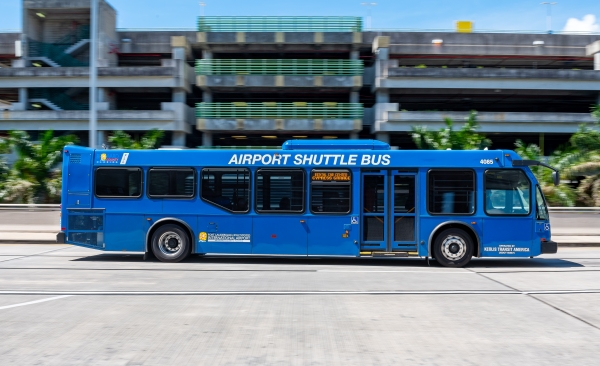20 Recommended Ideas For Choosing Event Transportation Sites
20 Recommended Ideas For Choosing Event Transportation Sites
Blog Article
The Top 10 Tips For Selecting The Best Size Of Vehicle And Capacity In The Case Of Employee Shuttles
Here are 10 top suggestions for selecting the best size of vehicle and its capacity for transporting employees:
1. Consider the Employee Transportation Needs
Begin by conducting an in-depth review of your employees' base to determine the number of employees who will utilize the shuttle service frequently. Take into consideration factors like the size and composition of the staff, the shifts they work, or the times when the most people are using the shuttle service. This information can be used to determine the ideal size of vehicle and the number of shuttles needed to be able to accommodate passengers.
2. Choosing the Right Type of Vehicle
Choose the vehicle that is best suited to your shuttle service, based on the number of employees you have, and what their needs are. The options include minibuses vans, or larger buses. Minibuses that are able to maneuver through tighter spaces and are perfect for small groups, can be the best alternative. However larger buses will be better suited for those who have to transport a lot of people. Be aware of the design and if it offers adequate seating and space to store luggage in case employees travel with bags or other equipment.
3. Evaluate Fuel Efficiency
The cost of fuel can have a significant impact on the total budget for shuttle services. Make sure to choose fuel-efficient cars when selecting vehicles in order that reduce operating costs. Also, consider hybrid or electric vehicles as well, because they are more durable and provide savings in the long term. By comparing the fuel economy of various vehicles and making an informed choice that balances both capacity and cost-effectiveness.
4. Take into consideration Accessibility Features
Check that the vehicle you select is compliant with accessibility standards in order to accommodate employees with disabilities. This can include features such as wheelchair lifts and low floors, which make it easy to get in, or designated seating for people who have mobility difficulties. Accessible transportation is not just a matter of meeting legal requirements, but also fosters the diversity of work.
5. Plan for expansion and flexibility
The workforce size may change as organizations grow. Consider the possibility of future growth when choosing a vehicle. When selecting vehicles, consider the possibility of growth in the future.
6. Research Safety Ratings and Features
Safety is a priority in the transportation of employees. Find out about the safety attributes and rating of vehicles prior to deciding on one. Consider vehicles that are equipped with the latest safety technology like stability control, anti-lock brakes, and collision avoidance systems. In addition, ensure that the vehicle is compliant with all local and federal security regulations to ensure the safety of employees while they travel.
7. Assess Maintenance and Reliability
Choose vehicles that are renowned for their low maintenance cost and reliability. A vehicle that needs frequent repairs can cause disruption to shuttle services or cause employee discontent. Consider researching the reliability ratings of different types and makes, as well as setting up a schedule of maintenance to keep your vehicles in good working order. This will prolong their life.
8. GPS as well as Fleet Management Software
Implementing GPS trackers and fleet management software can boost the efficiency of a shuttle service. These software tools offer real-time tracking and route optimization based on the patterns of traffic and schedules of employees. Fleet management tools can help in monitoring the usage of vehicles, their fuel consumption and maintenance making sure that vehicles are utilized effectively.
9. Employee Feedback Systems
Encourage your employees to provide feedback on the comfort of their vehicles and capacity via surveys or suggestion boxes. The analysis of employee experiences can reveal issues such as overcrowding or seating comfort. This feedback should be reviewed regularly to allow adjustments to service or vehicle selection in order to create a positive experience.
10. Budget for total cost of ownership
TCO is a measure of the total cost for owning a vehicle. It includes expenses for fuel, depreciation and maintenance and insurance. TCO analysis allows you to make educated decisions that balance initial investment with operational costs in the long run. You can make informed decisions by weighing all the costs involved. This will help you select a car that meets your financial needs while providing capacity and reliability.
Follow these tips to ensure your organization is able select the appropriate vehicle and to manage the size of employee shuttles. Have a look at the top rated sell about employee transportation for more advice including shared ride services, dallas airport shuttle to hotels, bus airport shuttle, atlanta airport transportation, los angeles airport car service, airport transportation, nyc transporter, miami transportation services, airport shuttle service, dallas airport shuttle and more.
The Best Tips For Capacity In A Vehicle And The Options For A Company Transport Service
Here are 10 top tips to help you choose the ideal car for your event transportation:
1. Evaluate Event Attendance Estimates
Estimate how many people will attend the corporate function. Registering data, RSVPs, and historical attendance records can be used to estimate the number of people who attended. Understanding the number of expected participants will help you better plan your vehicle options and estimate the capacity needed for transport.
2. Choose the Right Vehicle Types
Choose the best vehicle according to the expected amount of guests attending and the nature or the event. You may want to consider hiring buses or shuttles that can accommodate multiple passengers for larger groups. For smaller groups or VIP attendees, luxury vans or sedans could be more appropriate. Offering a range of vehicles, you can ensure that all attendees are comfortably transported.
3. Take into consideration your accessibility needs
Be sure that everyone who are able to drive, even those with disabilities, can access the vehicle. This could include choosing vehicles equipped with wheelchair lifts or accessible options for those with disabilities. The inclusion of wheelchairs in transportation is not just compliant to legal requirements however, it can also enhance the overall experience of all participants.
4. Choose multiple pickup locations
If your attendees are coming from multiple places, it's recommended to arrange multiple pick-up points to make it easier for transport. It is possible to pick central locations like hotels, airports or transit hubs. By allowing different pickup locations, you can maximize attendance and minimize logistical issues.
5. Install a Reservation System
Think about using a booking service to arrange your transportation. It allows attendees to book their seats in advance of time, which guarantees that vehicles are filled and reduces the chance of overcrowding. Reservation systems also help in adjusting capacity based on the demand.
6. Take the most effective routes
Plan the best routes to get to and from your destination on time. Study traffic patterns to find the best routes for vehicles. Using route optimization software can assist in identifying the most efficient routes and speed up travel and improve the overall experience for guests.
7. Provide On-Demand Shuttle Services
For larger events consider providing shuttle service to guests who can arrange transportation as they wish. This is especially beneficial when events are spread over several days and with various schedules. On-demand transportation can increase the flexibility of attendees, and they will be able to access it whenever they require it.
8. Monitor Vehicle Capacity Utilisation
Track the utilization of vehicles during the event. By monitoring the amount of seats full, it's possible to make quick changes. Analyzing the data gathered post-event will also help with future planning.
9. Transport Information Must Be Communicated Clearly
Inform the attendees of all transportation details prior to the event. Inform attendees about the pickup locations, schedules and the types of vehicles. Multiple communication channels like emails, apps for events, or printed material can help ensure that everyone is aware of their options.
10. Get feedback from customers to improve future Services
Following the event, gather feedback from guests about their travel experience. This could include vehicle comfort, punctuality, and general satisfaction. Analyzing this feedback will provide insight into what went well and what needs to be enhanced for future corporate events. This will allow more capacity and better planning.
These guidelines help companies manage event capacity and choose the most appropriate vehicles, which will ensure a seamless and enjoyable experience for all attendees. Proper planning and execution can increase the overall success of the event and create a favorable impression of the organization. Check out the top rated event transportation tips for blog examples including vehicle for transportation, transportation industry, solution transport, transportation companies near me, logistics near me, transportation management, pace transportation service, best transport, global logistics company, transportation solutions and more.